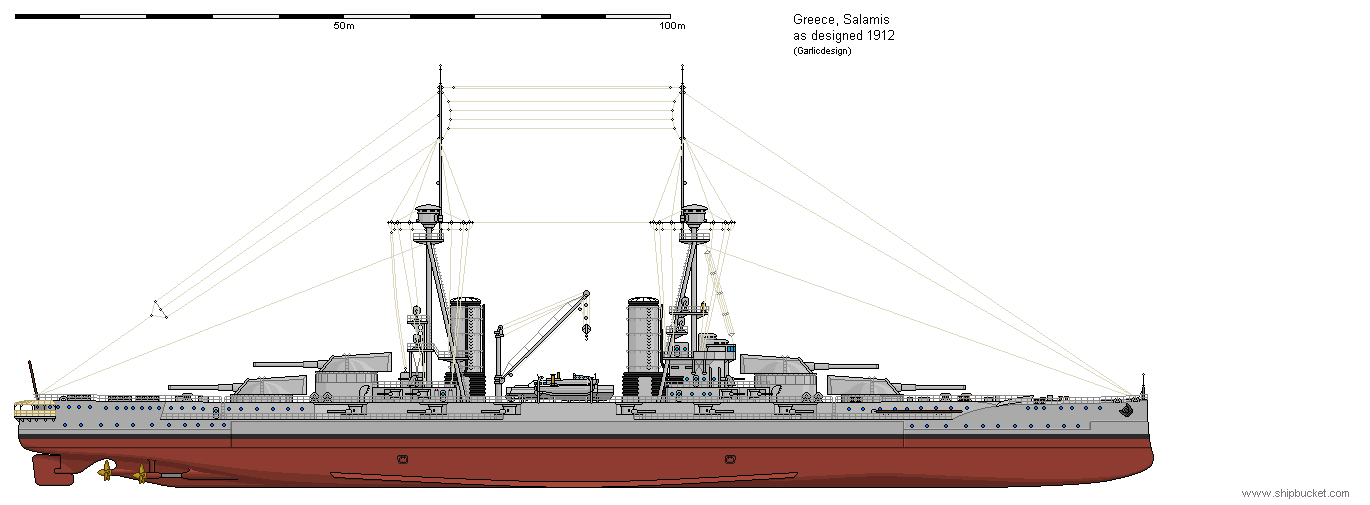The design that was finalised in 1912 showed a small battleship with good armament using superfiring fore and aft mountings. The previous 1911 design was a compromise but would still have been a useful ship.
Work began on the keel on 23 July 1913, and the hull was launched on 11 November 1914. Construction stopped in December 1914, following the outbreak of World War I in July of that year. The German navy employed the unfinished ship as a floating barracks in Kiel. The armament for this ship was ordered from Bethlehem Steel in the United States and could not be delivered due to the British blockade of Germany. Bethlehem sold the guns to Britain instead and they were used to arm the four Abercrombie-class monitors. The hull of the ship remained intact after the war and became the subject of a protracted legal dispute. Salamis was finally awarded to the builders and the hull was scrapped in 1932. But 'what if...'

To complete the ship during the 1920's requires the help of the US Navy. Only three of the original four turrets remained, one of the Monitors was sunk by the Goeben in 1918 off Imbros Island. The USN had a pool of spare turrets for those battleships armed with the twin 14" and one of those would have to go to the Salamis to complete the ship. As described in the Katsonis page, these turrets nearly had their revenge and Goeben was lucky to escape from the brand new battleship.
The drawing below depicts the Salamis as it may have ended up if it had remained in service. I postulate that the Greeks send the Salamis to Germany for a complete rebuilding in 1939, when WW2 breaks out the Germans complete the rebuilding and commission the Salamis into the German Navy as the Brandenburg.

Which gives a very handy small battleship for use in the Baltic and Norwegian Seas. It does not have the range to be a raider or act with the newer and larger battleships. So it is tied to coastal actions. I might have to add this ship to some of the Norwegian Convoy interventions. One thought I had was to resleeve the guns from 14" to the 13.8" German standard which would allow for slightly larger charges to be used behind the shells for a greater range.
